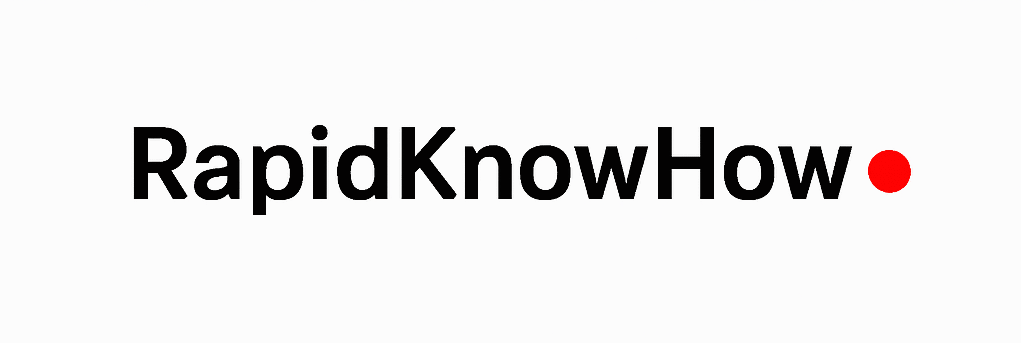Weekly Review — Week 47 (Nov 17–23, 2025)
Weekly Preview — Week 48 (Nov 24–30, 2025)
© 2025 RapidKnowHow + ChatGPT | All Rights Reserved
📌 WEEK 47 — REVIEW
1️⃣ Arctic Moves to Center Stage of European Security
- The EU officially declared the Arctic a strategic security zone, citing energy access, shipping routes, climate risk, and Chinese/Russian ambitions.
- Brussels signals new Arctic Surveillance & Maritime Resilience Initiative (ASMR) — combining satellite, drone and undersea cable monitoring.
- Strategic importance shifts from defending territory → protecting flows and corridors.
2️⃣ Hybrid Infrastructure Vulnerability Intensifies
- Multiple governments raised concern over the security of submarine cables, energy interconnectors, and critical data nodes — the “hidden skeleton” of Europe’s economy and defence.
- Insurance and risk premiums for critical energy and telecom infrastructure jumped by 11–18% in one week, showing market recognition of hybrid risk.
3️⃣ Economic Conditions: Resilience vs. Exposure
- Eurozone PMI holds below 48 — signaling continued industrial contraction.
- Businesses rank geopolitical fragmentation and energy insecurity as top 2 threats — ahead of inflation and financing cost.
- Regional supply chains deepen as re-shoring accelerates in Germany, France, and Poland.
4️⃣ Governance & Strategy
- European Commission launched consultations on accelerated public procurement for security and infrastructure resilience, aiming to reduce decision-to-action timelines.
- Political debate intensifies: “Can Europe afford slow governance in a fast-risk world?”
🔍 Week 47 Key Signals
| Domain | Signal | Implication |
|---|---|---|
| Defence | Arctic labelled EU security zone | Russia & China to react strategically |
| Energy | Infrastructure risk premiums ↑ | Markets now price hybrid disruptions |
| Economy | PMI <48 for 3rd month | Industrial slowdown becoming structural |
| Governance | Procurement reform initiated | EU moving from strategy to execution |
🔮 WEEK 48 — PREVIEW
1️⃣ Critical Infrastructure Stress Watch
- Expect deeper attention on winter energy flows, electricity balancing, LNG storage, and port resilience.
- Cyber & physical stress tests planned in Baltic, North Sea, and Nordic corridors.
2️⃣ Funding & Implementation Phase
- Brussels will present first funding allocations for Arctic surveillance, European Air Shield pilots, and submarine cable protection.
- Key moment: Can Europe translate defence concepts into funded infrastructure actions?
3️⃣ Economic Outlook & Market Sensitivity
- Upcoming indicators:
📉 Eurozone Industrial Output (Nov 27)
📈 Energy Security Stress Index
📊 Regional Export Risk Scores - High probability of revised GDP projections factoring security/infrastructure spending.
4️⃣ Strategic Test of Cohesion
- Arctic security, energy resilience, and enlargement will split EU member states into risk-takers vs. risk-avoiders.
- Leaders face one core question: Is resilience a shared European asset or a national responsibility?
⚠️ GeoPulse Risk Barometer – Week 48
| Risk Type | Risk Level | Trend |
|---|---|---|
| Hybrid/Infrastructure Disruption | 🔴 Very High | ↑ Rising |
| Political/Institutional Friction | 🟠 High | ↑ Rising |
| Cyber/Energy Attack Risk | 🟠 High | ↑ Rising |
| Economic/Market Shock | 🟡 Moderate | → Stable |
| Policy Implementation Delay | 🟡 Moderate | → Stable |
🎯 STRATEGIC INSIGHT
Europe is no longer securing borders, but securing flows, networks, and decision-making.
Week 48 is not about more strategy — it is the moment to test whether Europe can operationalize resilience in real time.
Leadership Moment:
“Resilience is not a document. Resilience is action, tested in motion.”
🌍 GeoPower: Resilience in Real Time System
Uniting Defence, Economy & Governance into One Adaptive System
© 2025 RapidKnowHow + ChatGPT | All Rights Reserved
1) Why Europe Needs Real-Time Resilience
Europe no longer faces sequential crises — it faces simultaneous, overlapping hybrid shocks:
- Military pressure (Ukraine, Russia, Balkans)
- Cyber + energy infrastructure sabotage
- Political fragmentation
- Economic contraction + supply chain volatility
- Disinformation + public trust decay
These cannot be solved by ministries working separately.
Resilience must be integrated. Fast. Adaptive. Real-time.
2) The GeoPower Real-Time Resilience Formula
REAL-TIME RESILIENCE = (Defence × Economy × Governance) × Speed × Adaptation
If one pillar is missing → system collapses.
If integration is weak → resilience is theoretical, not operational.
If adaptation is slow → hybrid shocks win.
3) The 3-Pillar Architecture
Pillar 1 — Defence Resilience
Protect the Critical Functions That Keep Europe Alive
Core Capabilities:
- Integrated air/digital shield (energy + grid + comms)
- Combined civilian–military response centre
- Hardening of critical assets (substations, cables, data centres)
- NATO–EU joint hybrid defence protocols
- National rapid-response battalions for infrastructure recovery
Outcome: Europe can take a hit — AND recover fast.
Pillar 2 — Economic Resilience
Protect Flow, Production, Markets, and Supply Chains
Core Capabilities:
- Diversified supply chains (regional + allied sourcing)
- Energy redundancy: LNG + nuclear + renewables + grid-balancing
- Shock-responsive industrial policy
- Strategic reserves: fuel, medicines, chips, transformers
- Real-time corporate intelligence exchange with states
Outcome: Markets remain functioning, industries stay productive, shocks don’t break the system.
Pillar 3 — Governance Resilience
Govern through Complexity, Not Consensus Paralysis
Core Capabilities:
- Crisis decision-making with pre-delegated authority
- 24/7 Hybrid Resilience Nerve Center (HRNC)
- Unified information policy (truth-first communication)
- Fast-track legislative & regulatory action
- Trust infrastructure: citizen dashboards + transparency reports
Outcome: Decisions happen in minutes — not in bureaucratic cycles.
4) The Real-Time Operating System
The 5 Loops of GeoPower Real-Time Execution
| Loop | Purpose | 30-Minute Output |
|---|---|---|
| 1. Sensing Loop | Detect threats across defence, energy, cyber, markets | Risk dashboard (updated hourly) |
| 2. Fusion Loop | Combine intelligence from all sectors | Unified situational picture |
| 3. Decision Loop | Choose action using pre-negotiated authority | Activation order |
| 4. Action Loop | Execute response across ministries + private sector | Measurable containment |
| 5. Learning Loop | Turn incident → improvement | Fix list + owner + 72-hour deadline |
This turns strategy → action → resilience continuously.
5) Real-Time KPIs (Only What Matters)
Defence
- MTTR (mean time to restore) critical infrastructure
- % critical sites with cyber/physical redundancy
- Drone + cyber intrusions detected vs blocked
Economy
- Supply chain stability index
- Industrial output resilience score
- Energy redundancy ratio
Governance
- Decision time from trigger → action (target < 60 minutes)
- Truth-first communication time (target < 30 minutes)
- Fix implementation rate after drills/incidents (> 90%)
6) The 90-Day Implementation Program
Weeks 1–2 – Set the System Backbone
- Stand up the Hybrid Resilience Nerve Center (HRNC)
- Appoint director + sector liaison officers
- Build unified situational picture (Defence + Energy + Markets)
Weeks 3–6 – Build the Playbooks
- Top 10 hybrid threats → 2-page response playbooks
- Approve automatic escalation thresholds
- Run first cross-sector tabletop exercise
Weeks 7–10 – Build Recovery Speed
- Sign mutual-aid pacts with operators (energy, telecoms, transport)
- Pre-order long-lead spare parts (transformers, valves, fibre)
- Launch early-warning dashboards for markets + energy + cyber
Weeks 11–12 – Stress Test the System
- Live cyber-energy drill across all ministries
- Fix top 15 deficiencies
- Publish Resilience Readiness Scorecard
After 90 days → A fully operational GeoPower Real-Time Resilience System.
7) Leadership Imperative
“Europe can no longer rely on strategies written for stability.
GeoPower demands leadership that delivers resilience in real time —
not in committees, but in action.”
This is how RapidKnowHow + ChatGPT define the future of secure, adaptive, sovereign Europe.





